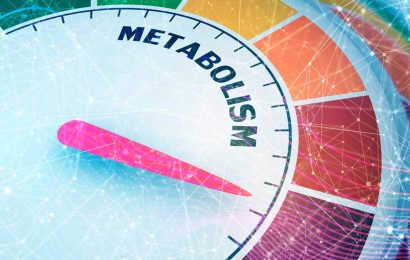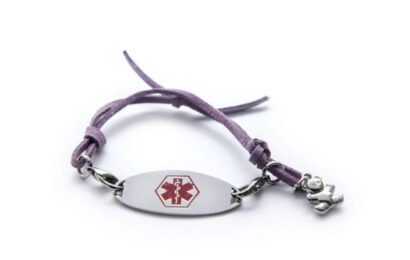Nitric oxide (NO) is a substance made by the body that plays a key role in supporting health. There are ways that you can ensure that your body has enough NO, including eating certain foods and staying active. Read on to learn more!
What does nitric oxide do?
NO helps to promote health in a number of ways:
- It relaxes blood vessels and keeps them flexible, helping blood flow efficiently
- It helps control blood pressure
- It reduces plaque formation in arteries
- It improves memory and cognitive function
- It helps maintain a healthy immune system
- It may work to kill cancer cells and stop the growth of tumors
- It could potentially be used as a way to treat COVID-19
What’s the link between nitric oxide and diabetes?
People who have diabetes may not make enough NO. This may, in part, explain why people with diabetes are more likely to have high blood pressure, heart disease, and other vascular complications, including kidney and eye disease.
To get cutting-edge diabetes news, strategies for blood glucose management, nutrition tips, healthy recipes, and more delivered straight to your inbox, sign up for our free newsletters!
What role does diet plan in boosting nitric oxide?
Certain foods can increase NO production in the body. As a bit of background, cells in the body use arginine, which is an amino acid, to make NO. Foods high in protein help to supply arginine. And other foods, including many vegetables, naturally contain nitrites and nitrates that get converted to NO in the body.
Foods that contain arginine include:
- Turkey
- Chicken
- Pork
- Dairy foods (milk, yogurt, cheese)
- Nuts (almonds, cashews, peanuts, walnuts, pecans, hazelnuts)
- Seeds (pumpkin, sesame, sunflower, watermelon)
- Legumes (soybeans, chickpeas, lentils)
- Whole grains (oats, brown rice, buckwheat, corn)
Healthy foods that contain nitrites and nitrates include:
- Beets
- Cabbage
- Carrots
- Broccoli
- Kale
- Swiss chard
- Spinach
- Arugula
- Celery
Other foods that help with the formation of NO in the body are:
- Citrus fruits (oranges, lemons, limes, grapefruit)
- Pomegranate
- Watermelon
- Grapes
- Berries
- Garlic
- Dark chocolate
- Red wine
Aren’t nitrites and nitrates bad for us?
Some foods (see above) naturally contain nitrates and nitrites, and these foods are healthy and safe. But food manufacturers add these substances to foods, such as luncheon meats, bacon, salami, and sausages, to provide color and prolong their shelf life. Nitrates and nitrites added during food processing can form nitrosamines in the body, which are linked with causing cancer. Nitrosamines can also form if foods are fried at high temperatures.
Limit your intake of processed meats; not only do these contain nitrites and nitrates, but they tend to be high in saturated fat and sodium, as well.
What about taking arginine supplements to boost NO?
It seems that there are supplements for just about everything, and supplements for NO are no exception. Arginine (also called L-arginine) comes in supplement form. L-arginine is also touted as a supplement that improves performance in athletes; however, there isn’t enough evidence to support its effectiveness.
There is evidence, however, indicating L-arginine may lower blood pressure, lower cholesterol, and improve the health of blood vessels. However, taking L-arginine after having a heart attack can be dangerous; this supplement can also worsen allergies and asthma, and may trigger the herpes virus if you’ve previously had cold sores or genital herpes. L-arginine supplements can also cause upset stomach and diarrhea.
Finally, L-arginine supplements can interact with some medications, according to the Mayo Clinic website, such as:
- Blood thinners (aspirin, warfarin)
- Some diuretics
- Some blood pressure medicines, such as ACE inhibitors and ARBs
- Nitroglycerin
- Erectile dysfunction drugs (e.g., Viagra, Cialis)
- Some diabetes medicines
To avoid serious side effects and medication interactions, talk with your provider about the pros and cons of taking L-arginine.
Other ways to boost nitric oxide production
Eating healthfully is one way to help your body make NO, but there are other steps you can take:
- Be active on a regular basis. Exercise improves endothelial function, which in turn, generates NO.
- Stop smoking, since long-term smoking decreases the formation of NO in the body.
- Limit the use of mouthwash. Mouthwash reduces the “oral microbiome,” which plays a role in nitric oxide formation.
- ·Breathe deeply and slowly through your nose to help release nitric oxide and lower blood pressure.
- Aim to get your “numbers,” such as blood sugar, blood pressure, and cholesterol at target.
Want to learn more about nitric oxide? See “Nitric Oxide: What to Know” and “Nitric Oxide: Definition and Overview.”





